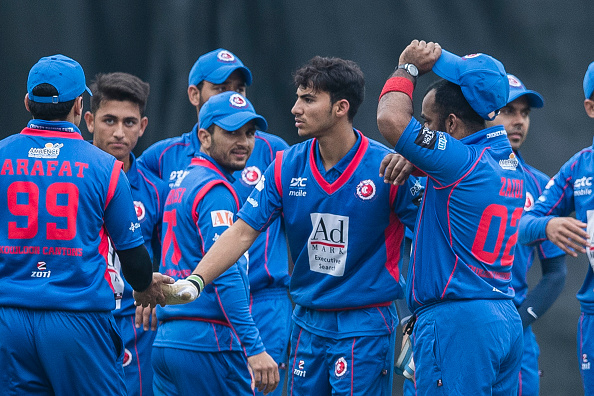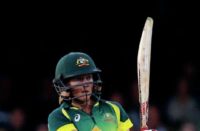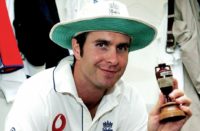Tim Wigmore suggests that lessons should be learned from the forward thinking of one of cricket’s smaller nations
Tillakaratne Dilshan, Chris Jordan, Darren Sammy, Marlon Samuels, Samuel Badree, Misbah-ul-Haq, Ian Bell, Kumar Sangakkara and Saeed Ajmal. The list goes on. An extraordinary collection of international talent last week gathered in Hong Kong for the second edition of the T20 Blitz.
This was not just the best domestic T20 tournament in Associate history; it was a bigger spectacle, with a far more appealing cast of overseas players, than many T20 competitions in Full Member countries. And all achieved in a country with only three proper cricket grounds.
How the hell did they do it? Above all, the success of the Hong Kong Blitz was a triumph for Cricket Hong Kong’s (CHK) vision and pioneering spirit. T20 is the format that offers the best chance of popularising cricket around the world – and CHK have seen glitzy T20 leagues the world over and asked why they can’t host one themselves.
They have stubbornly rejected the conventional wisdom, that only domestic leagues in a select few heavyweight Test nations can generate any real interest.
But meticulous planning has also underpinned the T20 Blitz. Rather than attempt to lure leading T20 players for a couple of weeks, the tournament only lasts five days, which also makes it easier to sustain the cricketing world’s interest. It is scheduled at a smart time, after the Pakistan Super League (PSL) and before the Indian Premier League (IPL). The event had a soft-launch last year, with four teams playing six matches over three days, before being extended to five teams and 11 matches over five days this year.
CHK chief executive Tim Cutler said: “We have been careful not to stretch ourselves too much.” Last year the four franchises were auctioned off with a base price of only HK$50,000 (approx US$6,500) each, while event costs were kept manageable. The sums paid to control the franchises this year increased, as did sponsorship, but “we still ensured we did not bite off more than we could chew”.
The first edition of the Blitz was played only seven weeks after conception: a lesson in what is possible with imagination, even if the tournament was ruined by bad weather. After the first event, CHK had a much longer lead time to prepare for the second edition. Franchises have been able to prepare better too – in signing overseas players and coaches, and establishing their own commercial partnerships, too.
Innovation has been at the heart of the event’s success. Hong Kong are among the Associates at the cutting edge of live-streaming, recognising how essential it is to broadcast matches around the world.
Every Blitz match was live-streamed with a commentary team who knew far more about the players than most commentators of Associate matches during the World Cup, and the best clips – like Misbah-ul-Haq’s six consecutive sixes – assembled into easy-to-share packages. The upshot was remarkable: a total of seven million views of live streams and clips across YouTube and Facebook, vaulting past CHK’s target of one million for a tournament won by Kowloon Cantons.
The Blitz has also benefited from its enlightened thinking in allowing Islamabad United, of the PSL, to establish a partnership with Hong Kong Island United, facilitating players like Misbah and Saeed Ajmal playing for both, and also meaning that Islamabad United promote the league through their own social media accounts.
Yet this was not merely a sporting spectacle, like the USA all-stars games between teams captained by Sachin Tendulkar and Shane Warne in 2015, of the sort to be followed throughout the world. It was also a genuine attempt to galvanise cricket in Hong Kong and the rest of the Associate world.
Ensuring that all franchises chose one Associate player among their five overseas recruits was particularly admirable, showing how such tournaments can benefit the wider globalisation of the sport; Scotland captain Kyle Coetzer showed off his T20 prowess, and finished as the tournament’s second leading run-scorer.
Local players also enjoyed playing with some of the world’s leading T20 names. This edition showed off the best of Hong Kong’s batting talent – captain Babar Hayat, Niazakat Khan and Anshuman Rath, who is on the brink of signing for Middlesex, all scored copious runs, matching the heavyweight names from overseas.
Hong Kong cricket suffers from a lack of depth, and that was evident during the tournament, with many matches feeling less like 11-a-side cricket than seven-a-side, determined by the five overseas players and the two leading Hong Kong players on each team. Yet ultimately the talent beneath the full Hong Kong team will benefit hugely from the experience of playing in a high-profile tournament against some of the world’s best T20 talent. The tournament provides a way to bridge the huge gap between Hong Kong club cricket and the national team, ensuring new recruits are better-prepared for international cricket.
And, if the T20 Blitz becomes more successful and lucrative, it will have another benefit, too: it will help to keep Hong Kong’s best players in the sport. At 26, Jamie Atkinson, Hong Kong’s former captain who played a first-class match for Warwickshire as a stand-in wicket-keeper in 2013, should be in the prime of his cricketing career.
Instead he is a full-time teacher, after rejecting a significantly less lucrative CHK contract. If the T20 Blitz can help bridge that salary gap, it will ensure that more of Hong Kong’s best players are actually available to the national team; Chris Carter, 19, Atkinson’s successor as keeper/batsman, is training to be a pilot so could be lost to the national team in a few years.
Hong Kong’s playing pool is simply too small to keep on replacing home-grown players lost prematurely.
Ultimately, the Blitz should help to increase this pool, through generating new interest in the sport in Hong Kong.
The governing body does sterling development work on a very limited budget, but franchises have been providing welcome support, working with schools and local communities – it is, of course, in the franchises’ interests for cricket to become more popular in the country too.
After a tournament that defied all expectations, the only shame was that the ICC did not grant the Blitz official T20 status, meaning that the matches will not count on players’ official records. Next year, hopefully, the ICC will be more enlightened, especially with Afghanistan and Ireland now having gained first-class status for their multi-day domestic competitions.
There seems little reason to believe that the Blitz will not be even better next year. “Our next big step will be the securing of a broadcast partner to enable the event to be on televisions around the globe,” Cutler said.
He envisages the Blitz becoming as high-profile as the Rugby Sevens tournament in Hong Kong, and able to generate cash to feed back in to the sport in Hong Kong.
Ordinarily, that would sound absurd, but not after the event that Hong Kong have just put on.
Other Associates should not just look on enviously but ask whether they can replicate a similar franchise T20 tournament of their own. In 2012, Ireland discussed creating a five-day T20 event with six sides, but the plans never got off the ground.
It might be time to think again, and follow Hong Kong’s lead.
This piece originally featured in The Cricket Paper, March 17 2017
Subscribe to the digital edition of The Cricket Paper here















